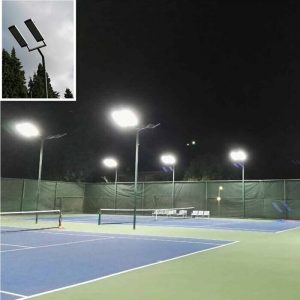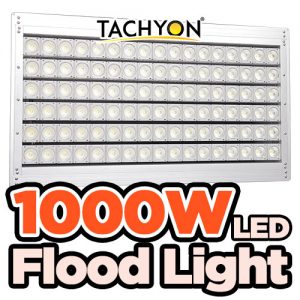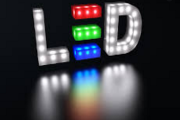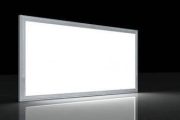3. Basic Packaging Structure
3.1 Heat dissipation coefficient
It is worth noting that the material selection between the copper-based heat sink and the chip is very important. The commonly used chip connection material in the LED industry is silver glue. However, after research, we found that the thermal resistance of silver glue is extremely high, which is 10-25W/(m.K). If silver glue is used as the connection material, it is equivalent to artificially adding a thermal resistance between the chip and the heat sink.
In addition, the internal basic structure of the silver glue after curing is: epoxy resin skeleton + silver powder filled thermal conductivity structure. Such a structure has a high thermal resistance and a low TG point, which is extremely unfavorable to the heat dissipation and the stability of the physical properties of the device.
Our solution to this problem is to use tin solder as the connection material between the die and the heat sink (the thermal conductivity of tin is 67W/mK), which can achieve an ideal thermal conductivity (thermal resistance is about 16°C/W) . The thermal conductivity and physical properties of tin are far superior to those of silver paste.
3.2 Light out
Due to the large difference in refractive index between the semiconductor and the closed epoxy, only a small part of the light generated by the active layer is taken out, and most of the light is absorbed by multiple reflections inside the chip, becoming a super The root cause of the low light extraction efficiency of high-brightness LED chips. How to use 50% of the light energy consumed by refraction and reflection between different materials inside is the key to designing an optical system.
Through the flip chip technology (FLIP CHIP), more effective light can be obtained than the traditional LED chip packaging technology. However, if a reflective layer is not added under the electrode of the light-emitting layer of the chip to reflect the wasted light energy, a light loss of about 8% will be caused. Therefore, a reflective layer must be added to the base material.
The light on the side of the chip must also be reflected by the mirror processing method of the heat sink to increase the light extraction rate of the device. In addition, a layer of silicone material should be added on the junction surface of the sapphire substrate (Sapphire) of the flip chip and the epoxy resin light guide to improve the refractive index of the light emitted from the chip.
Through the improvement of the above-mentioned optical packaging technology, the light extraction rate (luminous flux) of high-power LED devices can be greatly improved.
The optical design of the top lens of the high-power LED device is also very important. Our usual practice is: when designing the optical lens, the optical design requirements of the final lighting fixture should be fully considered, and the design should be designed to match the optical requirements of the application lighting fixture as much as possible.
Commonly used lens shapes are:
Convex lens, concave cone lens, spherical lens, Fresnel lens, combined lens, etc. The assembly method of the lens and the high-power LED device should ideally be hermetically sealed. If limited by the shape of the lens, semi-hermetic packaging can also be adopted. The lens material should be made of synthetic materials such as high-transmittance glass or acrylic, or traditional epoxy resin module packaging can be used, and the secondary heat dissipation design can basically achieve the effect of improving the light output rate.
4. Electrical Protection
We found that the InGaN anti-ESD human body model (HBM) with SiC as the substrate can reach more than 1100V. In general, the ESD resistance of InGaN with sapphire-like Al2O3 as the substrate can only reach about 400~500V (the comprehensive results of different brands of products). Such a low anti-ESD capability brings great inconvenience to LED LAMP packaging manufacturers and downstream electronic application manufacturers.
From the relevant information of the industry, it is known that every year electronic component manufacturers lose staggeringly due to ESD electrostatic protection problems, and there are certain losses in the process of assembly and consumer use. We know that SiC silicon carbide with high ESD resistance has certain antistatic advantages over sapphire Al2O3 as the substrate material, but it cannot fundamentally solve the ESD problem.
Informal statistics from different levels of electronics manufacturers have the following table of loss estimation reports.
Average ESD damage to electronics manufacturers
ESD Informal Summary of Static Losses by Level
Static Losses Reported, ESD
| Layer Manufacturer | Min. Loss | Max. Loss | Est. Avg. Loss |
| Component Manufacturer | 4% | 97% | 16-22% |
| Subcontractors | 3% | 70% | 9-15% |
| Secondary Contractor | 2% | 35% | 8-14% |
| User User | 5% | 70% | 27-33% |
Source: Stephen Halperin, “Guidelines for Static Control Management,” Eurostat, 1990
Sources of different levels of ESD
| ESD source: | 10-25%RH, | 65-90%RH |
| Walking across carpet | 35,000V | 1,500V |
| Walking across vinyl tile | 12,000V | 250V |
| Worker at bench | 6,000V | 100V |
| Poly bag picked up form bench | 20,000V | 1,200V |
| Chair with urethane foam | 18,000V | 1,500V |
We found that if an anti-ESD diode on the periphery of the chip is added to the high-power LED device package structure, the anti-ESD capability can be increased to more than 8500V. It basically solves the ESD loss problem of electronic manufacturers at different levels, and the practical application effect is very good.
5. Development Trend
We know that the external quantum efficiency of LED chips depends on the internal quantum efficiency of epitaxial materials and the light extraction efficiency of the chip. At present, the epitaxial materials used in high-power LEDs are MOCVD epitaxial growth technology and multiple quantum well structures. Although its internal quantum efficiency has not yet reached the highest level, there is still room for further improvement. However, we found that the biggest obstacle to obtaining high luminous flux of LED devices is still the light extraction method of the chip and the design of the packaging structure with high light extraction efficiency.
From the development experience of LED from 1970 to 2003, it can be known that the luminous flux of LED will increase by 2.2 times every 16-20 months. Therefore, it will be possible to achieve a light efficiency of 200Lm/W for lighting-class high-power LED devices within the expected five-year period. However, we cannot wait for high-power LED chips to achieve this light effect before developing and applying packaging technology.
We believe that the improvement of the luminous efficiency of lighting-level high-power LED devices depends on the synchronization of the improvement of the luminous efficiency of the chip and the improvement of the packaging light extraction and heat dissipation technology. At the same time, LED manufacturing equipment manufacturers should also develop such equipment simultaneously.






